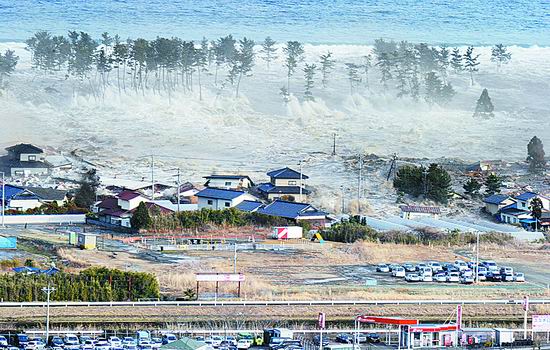(单词翻译:单击)
听力文本
This is Scientific American — 60-Second Science. I'm Christopher Intagliata.
The massive earthquake that rocked Japan in March 2011 took thousands of lives. It sent tsunami waves more than a hundred feet high towards northern Japan, where they battered the Fukushima Daiichi nuclear plant—and swallowed up whole swaths of coastline.
"Large amounts of villages and towns and cities washed into the ocean." Jim Carlton, a marine ecologist at Williams College. "Huge amounts of infrastructure, fisheries facilities, aquaculture. From children's toys, to fisheries baskets, to many vessels, buoys, containers, everything one can imagine."
Time and ocean currents have delivered hundreds of those objects to U.S. shores. Along with the stuff living in and on them: mussels, anemones, barnacles, crustaceans, worms—even a few fish, caught swimming in boats. Carlton and his team have now recovered more than 600 pieces of that debris, with the help of a huge network of scientists and citizen volunteers, and catalogued the hitchhiking Japanese species. The full manifest—289 species in all—is listed in a report in the journal Science.

While it's hard not to admire their tenacity, some of these transplants could pose a danger to local species: "It's really ecological roulette. It's really a matter of any number of species which have no prior history at all of becoming nuisance species, becoming invasive."
And as we clutter our coastlines with more and more development, and the ocean rips it away—as happened to Texas and Florida this month—Carlton says we can expect more of these ecological experiments, tsunami or not.
Thanks for listening for Scientific American — 60-Second Science Science. I'm Christopher Intagliata.
参考译文
这里是科学美国人——60秒科学。我是克里斯托弗·因塔利亚塔。
2011年3月日本发生的大地震夺走了数千人的生命。地震引发了超过100英尺的海浪,一路向日本北部蔓延,重创福岛第一核电站,并吞没了整个海岸线。
“大量的村庄、小镇和城市被冲进大海。”威廉姆斯学院的海洋生态学家吉姆·卡尔顿说道。“大量的基础设施、渔业设施、水产养殖设施,儿童玩具、渔网、还有大量船只、浮标、集装箱等等,你能想到的一切都被冲进了大海。”
时间和洋流将数百个这类物品冲到了美国海岸。连带被冲到海岸的还有寄居在这些物品上面和里面的生物:贻贝、海葵、藤壶、甲壳纲动物、蠕虫,甚至还有几条被发现时还在船里游的鱼。卡尔顿和团队现在已经找到了600多块残骸,在由科学家和公民志愿者组成的庞大网络的帮助下,他们对这些“搭便车”来的日本物种进行了编目分类。这些物种的完整清单列在《科学》期刊发布的一篇报告中,其中共列出289种物种。
虽然很难不佩服这些物种的坚韧,但是有些移民物种可能对当地物种构成威胁:“这真的是生态轮盘赌。问题是,完全没有前科的任意数量的物种突然变成了有害且具侵略性的物种。”
我们在海岸线不断开发,随后又被海洋不断冲走,正如这个月得克萨斯州和佛罗里达州发生的情况一样,卡尔顿表示,不管是否发生海啸,我们都将看到更多这类生态实验。
谢谢大家收听科学美国人——60秒科学。我是克里斯托弗·因塔利亚塔。
译文为可可英语翻译,未经授权请勿转载!
重点讲解
重点讲解:
1. swallow up 吞没;淹没;
例句:The fire swallowed up the house.
火焰吞没了房子。
2. along with 与…一起;
例句:He was facing eviction, along with his wife and family.
他和妻子、家人正面临着被驱逐。
3. in all 总共;合计;
例句:In all some 15 million people live in the selected areas.
总共有大概1,500万人住在所选定的区域内。
4. rip away 撕去;扯掉;剥去;
例句:He ripped away a wire that led to the alarm button.
他把连着报警按钮的电线扯掉了。


